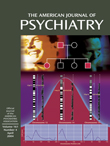To the Editor: We thank Ms. Mathy for her interest in our work. We agree that high standards of research and reporting benefit both clinical science and clients; however, we disagree with a number of her comments.
Ms. Mathy cites two articles to challenge our statement that no studies have examined suicidality among a community-based sample of adults with a childhood history of physical abuse. The article by Silverman et al. (1996) regarding the long-term sequelae of child and adolescent abuse followed individuals only to age 21; our work extended this line of investigation to the entire lifespan. The article by McCauley et al. (1997) examined a clinical group of patients from primary care internal medicine practices. This fact was noted by Santa Mina and Gallop in their review (1998), another of Ms. Mathy’s citations. Further, Santa Mina and Gallop reported that there were “no studies specific to childhood physical abuse” and underscored the need for “additional studies of…specifically physical abuse from…community subgroups.” Although we agree with Ms. Mathy that it is important to consider the overlap between forms of maltreatment, the majority of existing research examines a combination of maltreatment types or focuses on childhood sexual abuse. Far less is known about the association between childhood physical abuse specifically and psychiatric impairment.
In terms of the methodological concerns expressed, her comments reflected general issues that researchers in this field have grappled with for some time. Ms. Mathy suggests that our research “ignores” the relationships between duration, intensity, and frequency of abuse. As noted in the article, data were derived from a comprehensive mental health survey. Although it would have been interesting to include more parameters of maltreatment, practical issues of response burden prevented us from doing so. Ms. Mathy also identifies recall bias and aspects of the timing of maltreatment (e.g., the developmental stage) as limitations of the retrospective research design. We acknowledged potential limitations, such as recall bias, in our Discussion section. Alternative methods that would address such limitations are not easily applied to community samples. Ms. Mathy suggests the use of child protection cases of maltreatment and matched comparison subjects as a preferred research design. In fact, Widom
(1) has published widely since 1989 on the results of such a cohort study. However, this case-finding approach precludes the opportunity to study a community sample, as was our focus.
Finally, we must disagree with Ms. Mathy’s characterization of our research as a “replication study.” We do not claim to have produced the definitive study of the complex interrelationships between suicidality and its correlates. We do, however, suggest that the article contributes to our understanding of suicidality in depressed women through its 1) examination of correlates from multiple domains, 2) focus on childhood physical abuse, 3) investigation of the cumulative impact of psychiatric comorbidity, and 4) separate exploration of suicidal ideation versus attempts within a community sample. Given the potential clinical significance of research in this area, we encourage Ms. Mathy and others to join us in the challenge of furthering our understanding of the relationships between suicidality and correlates such as childhood physical abuse and depression.

